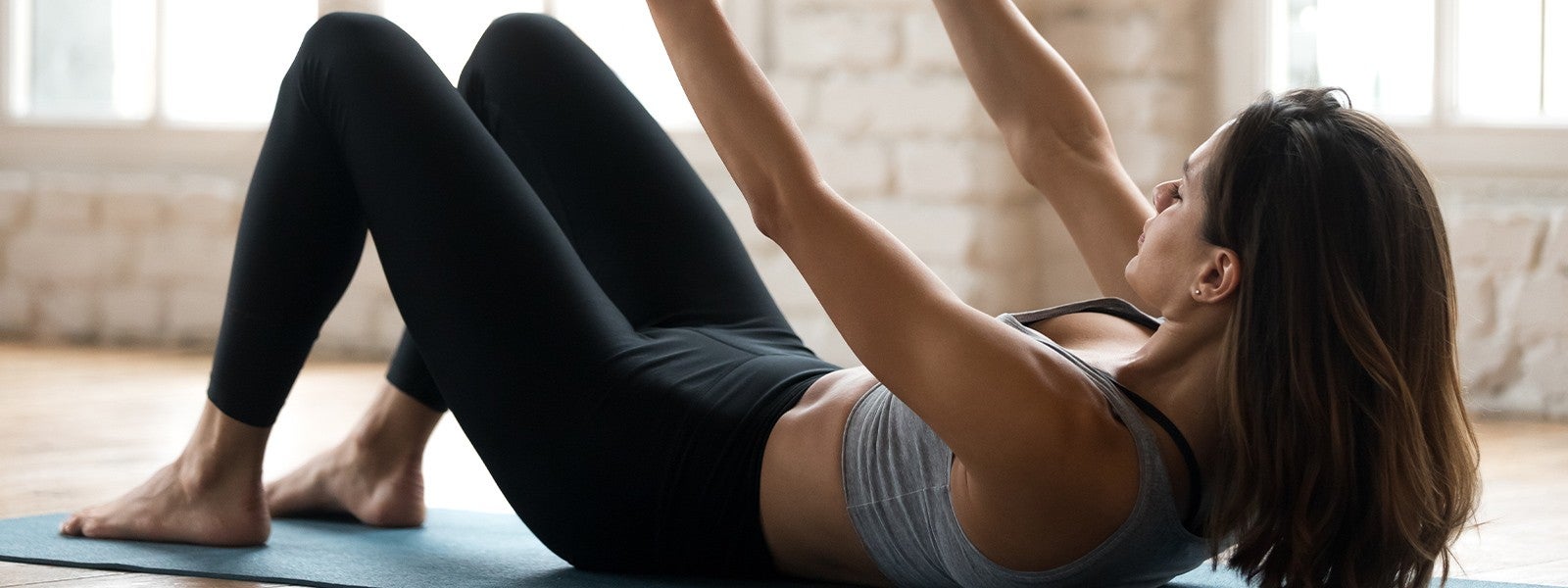
Pilates Modified Exercises Tips
There’s a reason people refer to a “Pilates practice” rather than “Pilates perfect.” It takes time to develop the strength and body awareness to perform the exercises successfully. When you’re new to Pilates or dealing with an injury, instead of feeling the work in the abdominals, for example, you may feel a strain in your neck, lower back, or hip flexors. A skilled instructor can suggest modifications that make a challenging exercise accessible while still retaining the integrity of the Pilates method. If you’re working out on your own, some good rules of thumb are: make it smaller (use a smaller range of motion), bend the knees, find a prop, and finally, if it hurts, don’t do it. Below, we’ve rounded up some of the most common stumbling blocks for beginners, as well as creative workarounds that make Pilates more accessible.
Modifying an exercise isn’t the mark of a beginner. Because Pilates teaches body awareness, even experienced practitioners employ modifications when they need to. In fact, knowing when and how to modify an exercise is a sign of a sophisticated Pilates practice.
“What if I can’t sit up straight?”
It can be challenging to sit up with a tall spine and legs extended straight out in front of you, as in the Saw and Spine Twist exercises. If you feel your lower back rounding despite your best efforts, try bending the knees slightly. Another option is to prop yourself up on a firm pillow, a yoga block, or even a stack of books. This lifts the pelvis up, changing the angle of the legs in relation to the trunk and making it more comfortable to sit up. This is why seasoned meditators invest in meditation cushions.
“Lifting my head strains my neck.”
Neck strain is a common complaint from those who are new to Pilates. Lifting the head and chest off the floor is necessary for the Hundred, the Series of Five, and Coordination on the Reformer, to name just a few exercises. Rest assured that in time, the abdominals will become stronger and take over for the neck muscles. In the meantime, to make it easier to lift the head and chest, place a small towel (such as a hand towel) lengthwise on the Mat under your back, shoulders, and head. Hold the top corners with your fingers to create a hammock shape. Lift the elbows slightly off the floor and keep the head relaxed into the towel. As you gain strength, you can start to relax your grip on the towel. Another handy tool is the Pilates Magic Circle. Place one of the two padded handles behind the bumpy ridge at the back of the skill and place your stacked hands inside the circle, pressing into the other pad with your fingers and palm.
“It’s uncomfortable to lie down on my back.”
If you have a forward head position (the head juts in front of the shoulders in a standing posture), it can be uncomfortable to lie flat on the back for supine exercises. Examples of supine exercises include Leg Circles as well as the “pre-Pilates” work like the Pelvic Clock and Knee Folds. An overly arched cervical spine can also make it hard to breathe in this position. To bring the chin towards the chest and open the airway, place a folded small towel or firm pillow under the back of the head. This will bring you into optimum alignment for breathing. A not-too-firm playground ball or Overball works as well. Note that if you will be lifting the hips up off the floor, as in Bridge, it’s best not to have anything under the head, as it puts too much stress on the neck.
“What if I can't get up from the floor?”
Many Pilates exercises begin in a supine position (lying on the back) on a Mat. If curling the spine up from the Mat is a challenge, use the strength of your arms to help. Grasp behind your thighs to get some assistance in the Roll Up, or to find the chest curl position used in the Hundred or the Series of Five. If you have trouble sitting up from a supine position, roll onto your side and use your arms and hands to push yourself up to a seated position, as you would when getting out of bed.
“Are there any modifications for tight hips and back?”
Yes! Bent knees are your friend. If you have tight hips and lower back, keep your knees bent and your feet flat on the floor for the Hundred, progressing to table-top (bent knees, shins parallel to the floor) when you are ready. Opt for bent or “soft” (slightly bent) knees instead of straight legs when possible, including in supine exercises or those that start from a supine position such as the Roll Up and Teaser. Keep the knees bent when sitting up, or prop yourself up as described above in “What if I can’t sit up straight?”. In the bridge position, don’t lift the hips too high.
“What if I can't put pressure on my wrists?”
If you have delicate wrists, roll up the edge of your mat to create a small ledge or lift for your palm (or invest in a foam wedge designed for just this purpose). In the plank position (the top of a push-up), try using fists instead of the flat part of your hands, or come down to your forearms instead. In side-lying leg work, instead of propping your head on your bottom hand, lie down with your bottom arm outstretched so the head rests on the inner upper arm. (This position can also be more comfortable for people with neck injuries.)
If you stay with your Pilates practice, even a modified practice, your abdominals will become stronger, which will help to relieve strain on the lower back and neck. You’ll develop greater flexibility and you’ll gain a deeper understanding of the exercises, including where you should be feeling the work in each exercise. In time, you may no longer need to modify. When you can confidently perform previously challenging exercises with modifications, revisit the original versions. You just may surprise yourself with your progress. And remember, the modifications are always there for you if you need them.
Comments
No comments yet. Be the first!


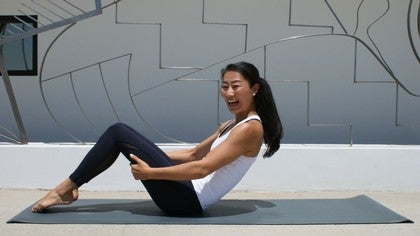
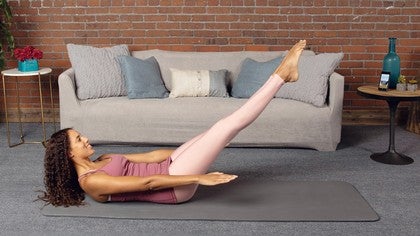
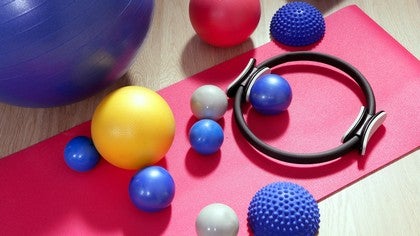
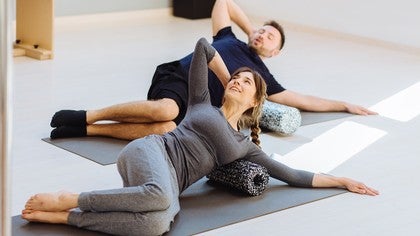

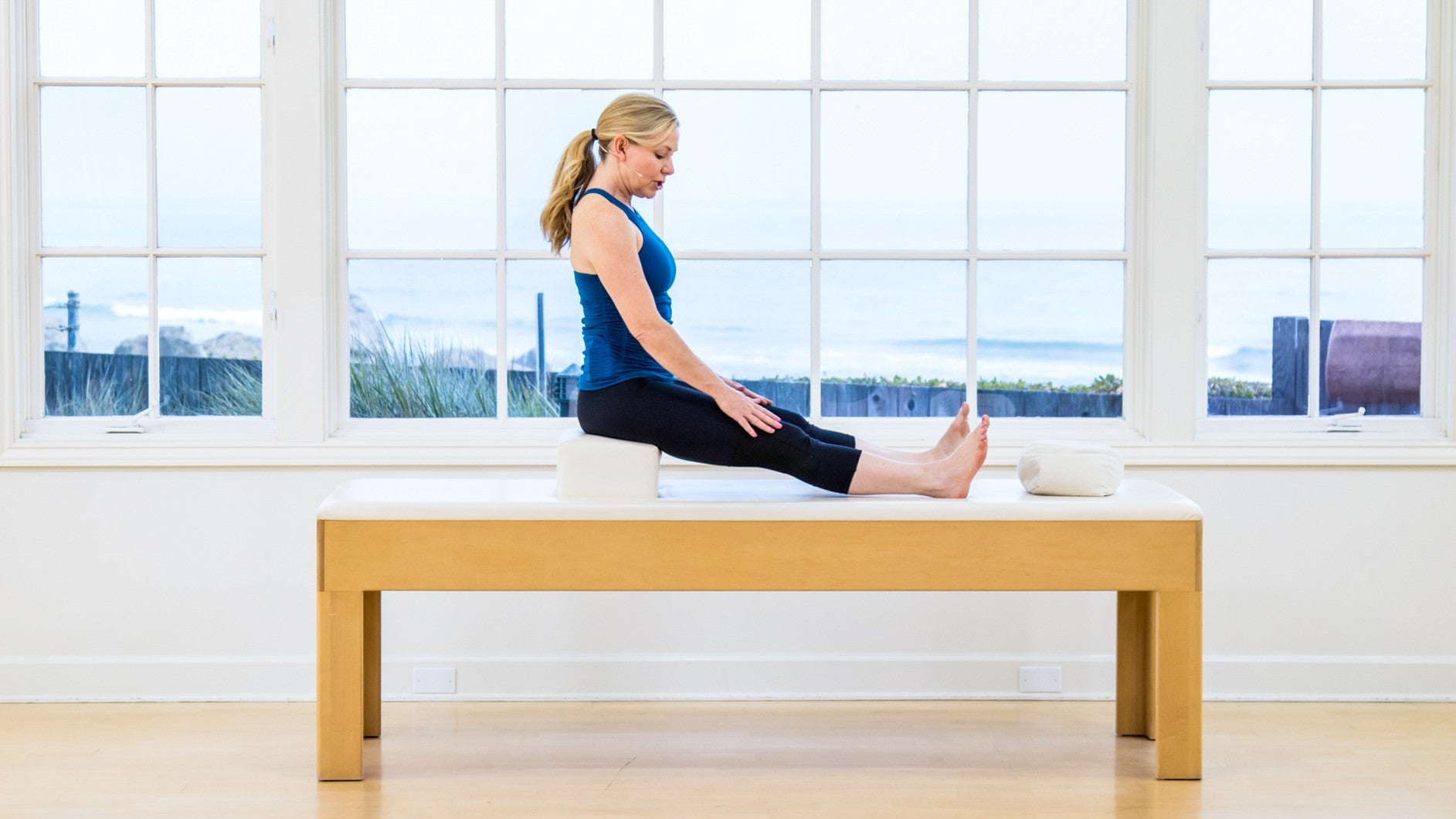

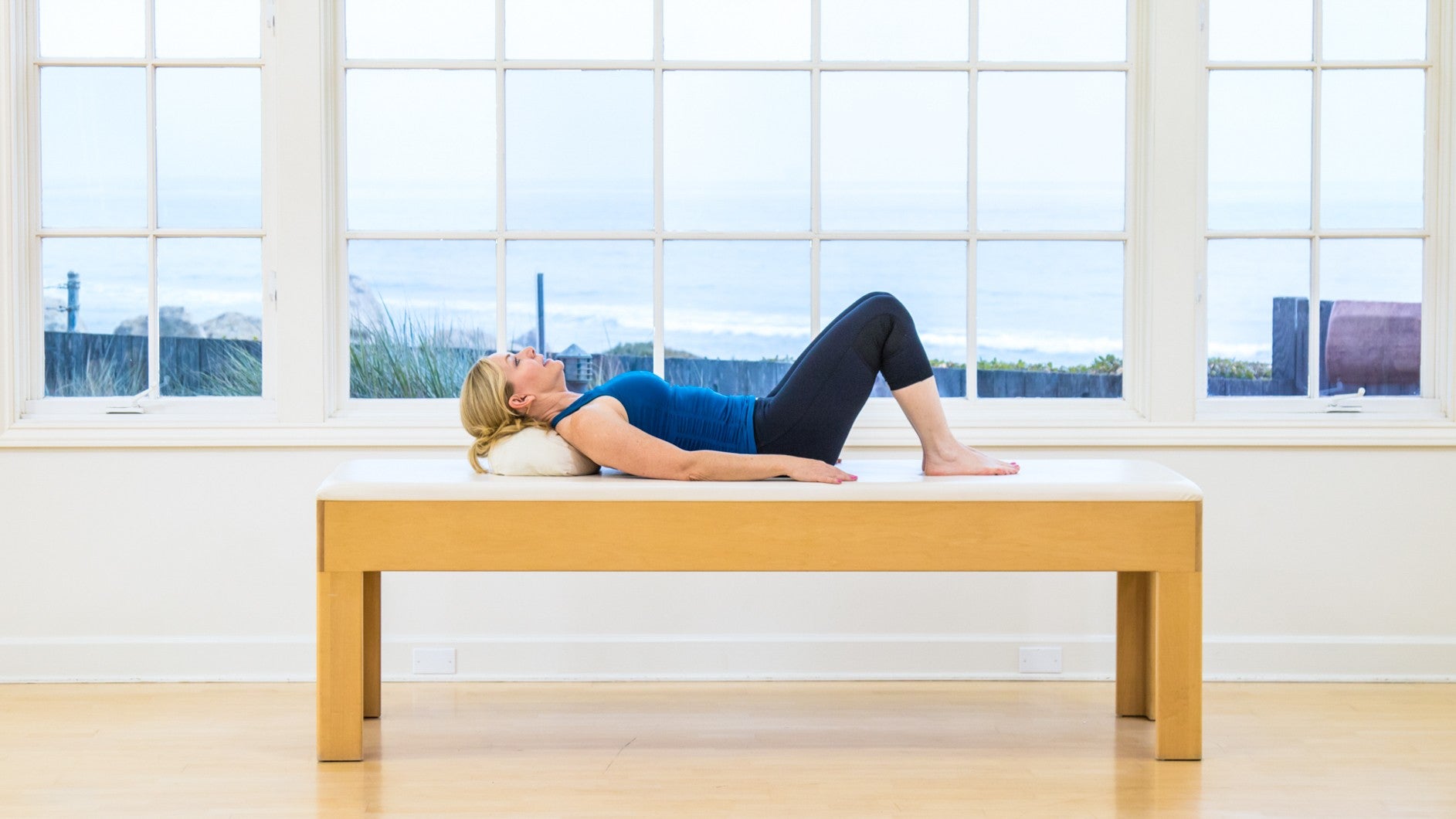
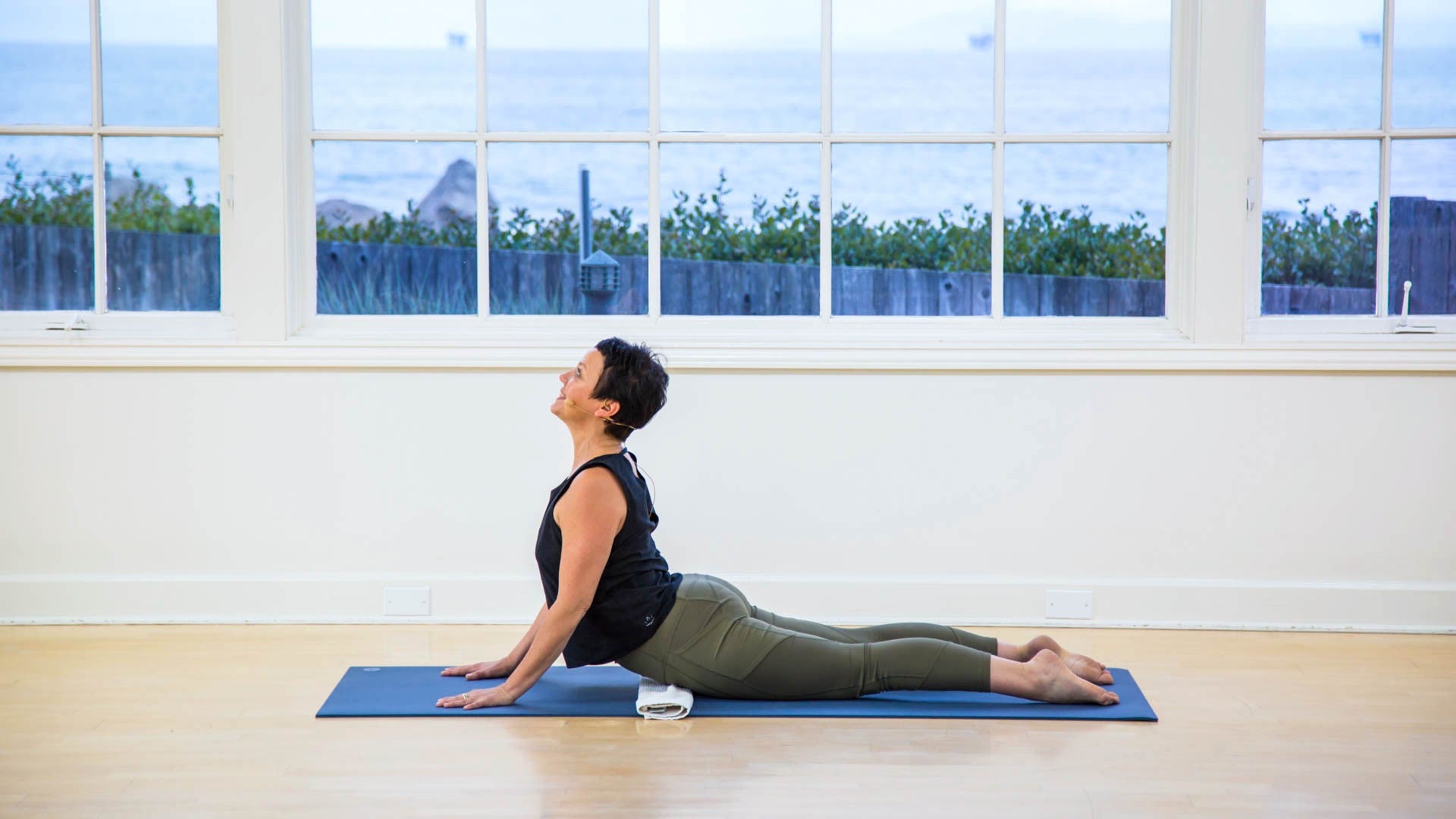

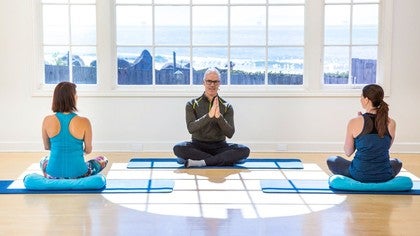

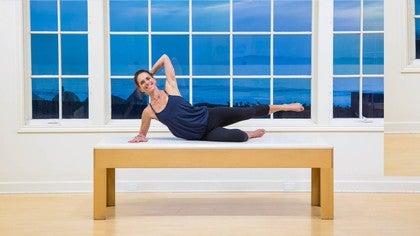
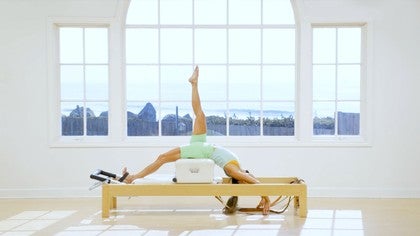







You need to be a subscriber to post a comment.
Please Log In or Create an Account to start your free trial.